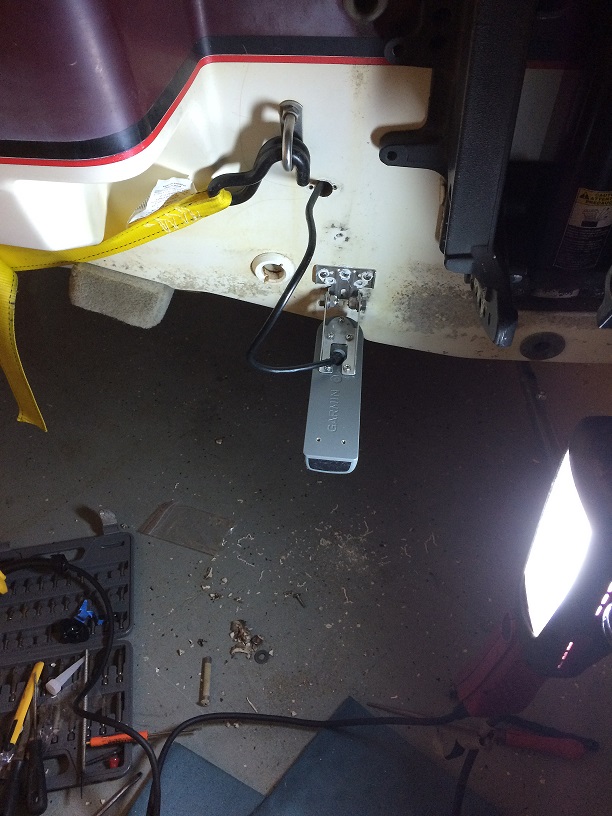Facemelter
Cadet
- Joined
- Sep 12, 2016
- Messages
- 20
OK, here's the skinny.
I bought this bought a few months back, 95 Quantum 170xd and the hummingbird transducer decided it was time to completely fall apart. I am currently replacing it with a Garmin unit 73sv or something. Anyway, I have the hole from the original transducer in the transom that I have run the new cord through. My concern is that I am thinking the hole is below the waterline. When I removed the old one, the hole was packed with what I would assume was white silicon, as it wasnt all that hard and pulled apart like old silicon.
Question. If this hole is below the water line, how do I fill it and seal it up. Not to concerned about looks, since this hole is only a little larger than a half inch.

I bought this bought a few months back, 95 Quantum 170xd and the hummingbird transducer decided it was time to completely fall apart. I am currently replacing it with a Garmin unit 73sv or something. Anyway, I have the hole from the original transducer in the transom that I have run the new cord through. My concern is that I am thinking the hole is below the waterline. When I removed the old one, the hole was packed with what I would assume was white silicon, as it wasnt all that hard and pulled apart like old silicon.
Question. If this hole is below the water line, how do I fill it and seal it up. Not to concerned about looks, since this hole is only a little larger than a half inch.





















